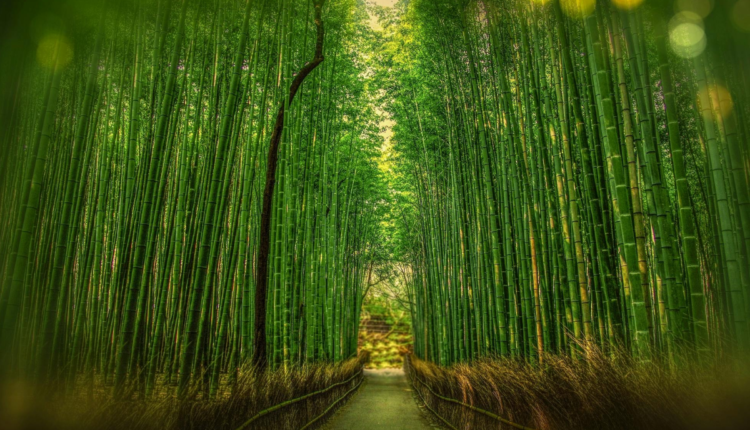Bamboo Cultivation: Know why bamboo is wonderful and evergreen
Bamboo yield increases year after year like the interest of banks
Bamboo is a wonderful plant. It is a wonderful tree. It is a mine of qualities. There is hardly any plant in the innumerable agricultural products whose scope of use is as wide as bamboo. That is why bamboo cultivation has all the features of a commercial and cash crop. While bamboo can be grown in areas with high rainfall, it can also occur in areas with low rainfall or negligible rainfall such as Ladakh, and even in a barren land. However, it is certain that it may take a little longer for bamboo to grow on poor soil than on fertile land.
There is no danger of pests in bamboo
Diseases and pests are not easily affected by the bamboo crop. There is also no danger of harming animals. Once bamboo is planted, its yield is not only passed on from generation to generation, but it also keeps on growing continuously. That is why bamboo is also called ‘Green Gold’. Unlike other crops, there is no need to prepare the bamboo field again and again. It doesn’t even require any special care. It gives great income at a very low cost. Bamboo cultivation can be started at a cost of only Rs 15 thousand per acre, which can earn one and a half to two lakh rupees annually.
Bamboo is the earning source for farmers
Once the bamboo crop is planted, it is ready for harvesting in the fourth year. That means from the fourth year onwards, bamboo trees become like earning sons of the farmers who not only provide him an income for his entire life but also keep on giving income to his grandchildren and even great-grandchildren. During four years, at least 40 large and fine bamboos grow from one bamboo plant.
Not all bamboos are cut in the fourth year, but only fully grown bamboos are cut. Its harvesting is done by the 10+2 method. The first year harvests 10 mature bamboos. In the second year new bamboos start growing and now if we cut the next 12 bamboos, then in the third year 14 bamboos become fit for cutting. In this way, the yield of bamboo goes on increasing year after year like the interest of banks.
Yields increased by 25% annually
The yield of bamboo weighing 40 to 50 tonnes per acre is given in the first year of harvesting. Then as bamboo grows in age, its size and weight also increase at the rate of 25 percent annually. By the third year of harvesting, the yield reaches around 100 tonnes. If the farmer sells his crop directly to the paper or furniture industry, he gets a price of 4.5 to 5 thousand rupees per ton. In bamboo cultivation, if a distance of 15 feet is kept between two lines and 8 feet between two plants, then it can also benefit from co-cropping. That is, the other crops can also be cultivated along with bamboo.
Bamboo remains always in demand
Bamboo is evergreen, so its market never slows down. Like bamboo, paper industry, furniture, and handicrafts industry, its demand remains throughout the year and year after year. Charcoal is made from its waste. For centuries, bamboo has enjoyed an incomparable place in terms of traditional building materials.
Bamboo is highly required in rural life. The farmers can produce it on a small scale as well as on a large and commercial scale. The government also encourages bamboo cultivation under the Bamboo Mission as it has the unmatched potential of becoming a source of additional income for the farmers.
Bamboo is a unique oxygen plant
The area under bamboo cultivation in India is about 9 million hectares. The northeastern states account for two-thirds of the total bamboo production in the country. The share of forest area in the total area of the country is 14.01 percent and bamboo is found in 11.7 percent of the total forest area. The quality of bamboo is that where it grows well in dense forests, it grows well in normal fields.
There are many species of bamboo, making it a wide range of values and uses. These are indicators of biodiversity and play an important role in soil conservation. During photosynthesis, bamboo produces four times more oxygen than other trees.
The livelihood of about 2.5 billion people in the world is linked to bamboo. Its global business is about $ 2.5 million or Rs 200 crore. Bamboo has traditionally been used as an industrial raw material for a myriad of tasks such as fuel, food, rural housing, shelter, fencing, pulp for paper production, etc. Bamboo is also known as ‘Green Gasoline’. In Assam, it is currently producing 6 crore liters of ethanol annually.
Phenomenal bamboo flowers
The biggest feature of the bamboo plant is its flower. Flowers blooming in bamboo is a unique and rare phenomenon. Most of its species flower once in 60 to 130 years. Such a long gap between flowering still remains very curious for botanists. They are genetically very strong. Another unique behavior of the extremely slow flowering species. Despite their geographical location and climate being different around the world, they all flower at the same time.
The genetic makeup of bamboo is astonishing. That’s why most bamboos are believed to have evolved from a single mother plant in some way or the other. These kept getting divided with the changing times and shared across the world. Therefore, when a tree with a homogeneous division of bamboo blooms in North America, the same thing happens in Asia. From this, it was assumed that the ‘preset alarm’ of heredity in the biological clock of bamboos is very strong and stable and does not depend on the weather and climate.
Bamboo flowers are rare
There are three types of flowers found in bamboo, which largely depend on the species and conditions: continuous flowering, sporadic flowering, and vigorous or vigorous flowering. The peculiar flowers of bamboo make it an interesting group because of its seeding behavior. Bamboo reclamation programs and large-scale afforestation require large amounts of seed, but flowering, planting patterns and lack of ‘germplasm and cohort’ collection in many species make this extremely difficult.
Long-term research on bamboo seeds for life cycle, seed morphology, seed germination, and germplasm conservation is a major scientific challenge as most bamboo are produced from their own branches and leaves. Even once cut, they have the ability to grow again.
Contact us:
If farmers want to share information or experiences related to farming with us, then they can do this by calling us on the phone number 9599273766 or by writing an email to [email protected] or by sending your recording. Through Kisan of India, we will convey your message to the people, because we believe that if the farmers are advanced then the country is happy.



